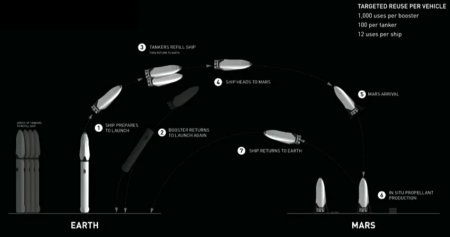Airbus signs first customer for its ISS external platform
The competition heats up: Airbus has signed its first commercial customer for an external platform the company will be installing on ISS by the end of 2018.
Neumann Space is an Australian company developing a solar-electric thruster that uses metallic fuels rather than a gas like xenon. The company believes that the thruster will have a higher performance versus conventional electric thrusters and be able to use a wide range of metals as fuels. The company will install an experimental payload on Bartolomeo, a platform that Airbus plans to mount on the exterior of the Columbus module for experiments that require access to the space environment. Paddy Neumann, chief scientist and founder of Neumann Space, said the power requirements for the thruster made flying it on a cubesat or other small satellite impractical. “When we heard about the Bartolomeo platform, we leapt at the chance,” he said in a ceremony at Airbus’ booth at the IAC exhibit hall where the companies signed the agreement.
…Airbus announced the Bartolomeo platform in June as part of what the company called an “end-to-end service” to provide efficient commercial access to the ISS. The company hopes to have the platform installed on the Columbus module by the end of 2018, but officials at the conference said they were still working out launch arrangements and were in discussions with NASA for the spacewalk that will be needed to install the platform outside Columbus.
What is happening here with Airbus and ESA is the same thing that is happening at NASA: a transition from ownership by government to ownership by competing private companies. The positive ramifications of this transition cannot be measured, and have an almost limitless potential for accelerating the exploration of space.
The competition heats up: Airbus has signed its first commercial customer for an external platform the company will be installing on ISS by the end of 2018.
Neumann Space is an Australian company developing a solar-electric thruster that uses metallic fuels rather than a gas like xenon. The company believes that the thruster will have a higher performance versus conventional electric thrusters and be able to use a wide range of metals as fuels. The company will install an experimental payload on Bartolomeo, a platform that Airbus plans to mount on the exterior of the Columbus module for experiments that require access to the space environment. Paddy Neumann, chief scientist and founder of Neumann Space, said the power requirements for the thruster made flying it on a cubesat or other small satellite impractical. “When we heard about the Bartolomeo platform, we leapt at the chance,” he said in a ceremony at Airbus’ booth at the IAC exhibit hall where the companies signed the agreement.
…Airbus announced the Bartolomeo platform in June as part of what the company called an “end-to-end service” to provide efficient commercial access to the ISS. The company hopes to have the platform installed on the Columbus module by the end of 2018, but officials at the conference said they were still working out launch arrangements and were in discussions with NASA for the spacewalk that will be needed to install the platform outside Columbus.
What is happening here with Airbus and ESA is the same thing that is happening at NASA: a transition from ownership by government to ownership by competing private companies. The positive ramifications of this transition cannot be measured, and have an almost limitless potential for accelerating the exploration of space.



